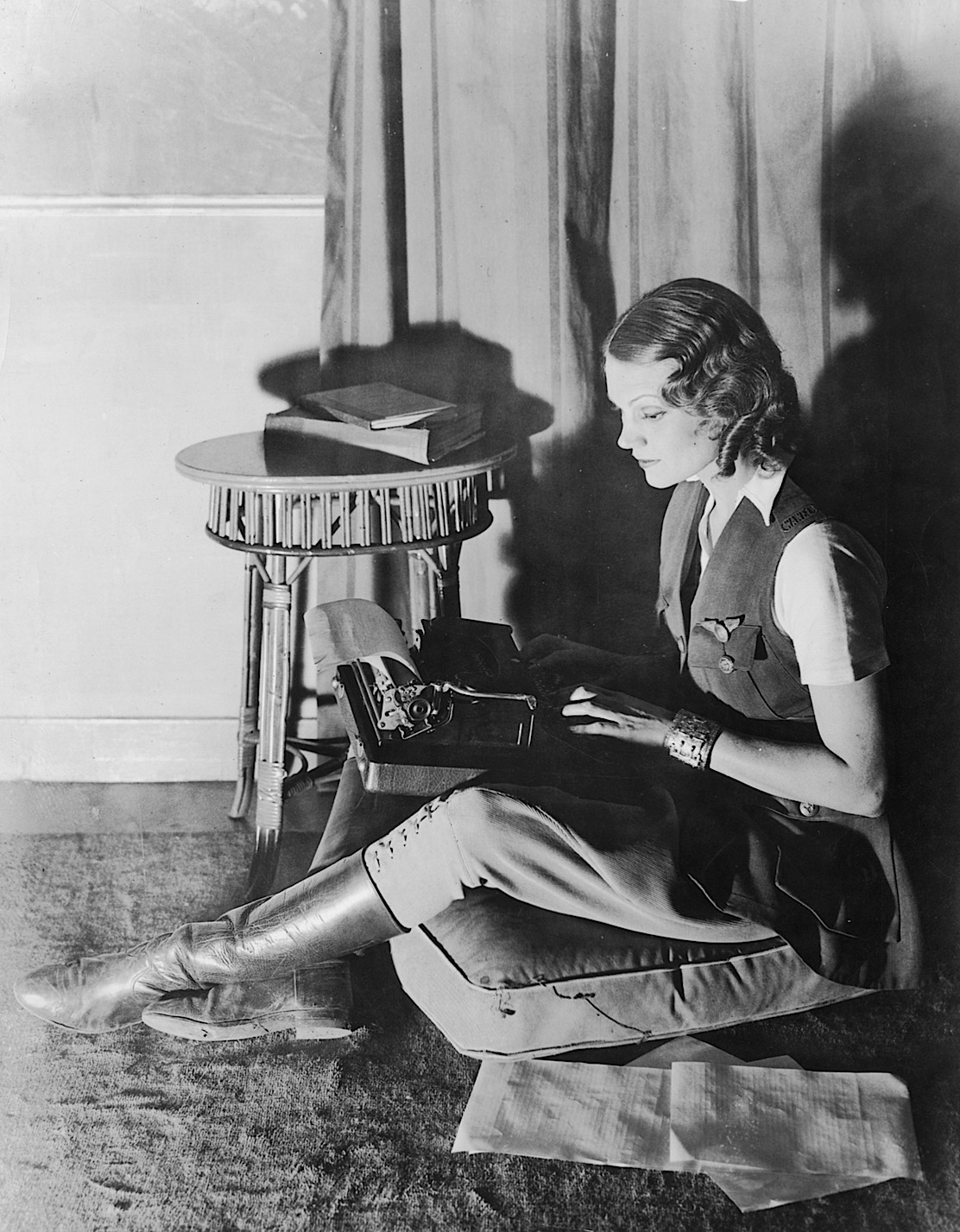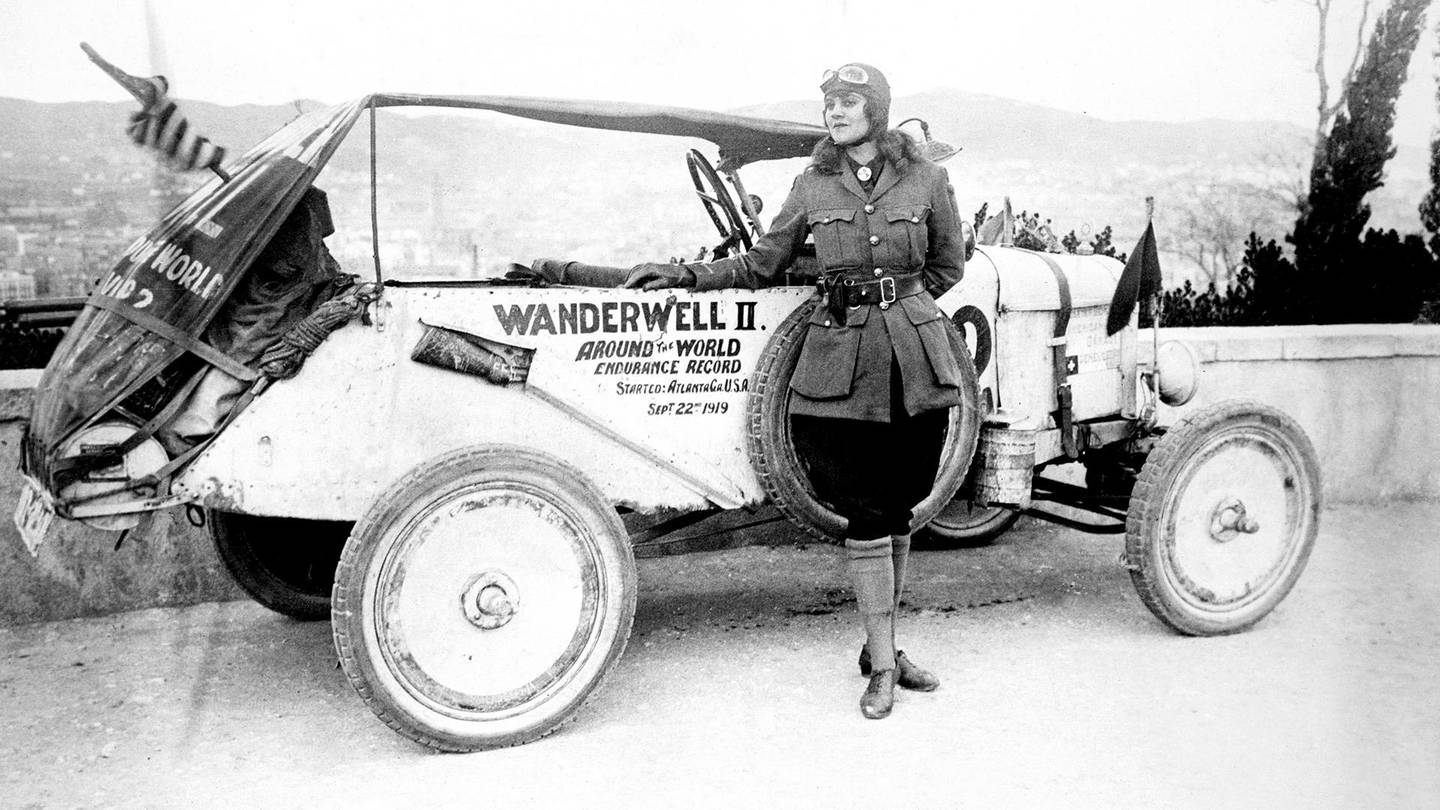A little inspiration goes a long way!
I feel like today is a perfect day to take a glympse back to the past and commemorate some corageous ladies who deserve the title of great female adventurers for they changed the history of travel and adventure. When I read about them, I feel inspired to put my ideas into action, planning new adventures, accomplishing great projects, breaking sexist barriers which still today prevail. The fight for equality is not over yet.
I would love to dedicate this little space to the great female travellers and adventurers of all times, from the beginning until today, for anything that makes you feel brave is great.
Amelia Earhart



1897, Kansas, USA: a writer, equal rights advocate and pioneer in aviation was born. Amelia was the first woman in history to fly across the Atlantic as a passenger, only to later become the very first woman to fly solo crossing the Atlantic in 1932. Five years after her intrepid adventure, and in the company of Fred Noonan, she aimed to be the first woman to fly around the world. After a stop in New Guinea, they flew towards the end of their journey which unfortunately became the end of their known whereabouts. Weeks before her fortieth birthday, Amelia, her travel partner and their plane disappeared, never to be found, somewhere in the Pacific, and close to the islands Howland and Baker (known to be the first to see the new day). After so many years, such strange event continues to be investigated and considered of public interest.
Amelia wrote best-selling books about her flying experiences, promoted commercial flying, and was an essential figure in the creation of The Ninety-Nines, an organization for women pilots.
Egeria
As I am a little curious, I want to see everything


 Spanish stamps collection dedicated to Egeria
Spanish stamps collection dedicated to Egeria
Known as the first great female traveller and pilgrim, and the first to document her adventure, Egeria (Eteria or Etheria) travelled from Europe to the Holy Land, using the Bible as her guide for an adventure of thousands of kilometres. She is considered pioneer in travel literature. Her writing -fresh, simple and personal- reveals a cultural sensitivity that transcends time; she shows genuine care and interest to know about local customs and traditions on every stop. From the fourth century, and of Hispano-Roman origin, her manuscript, Itinerarium ad Loca Sancta, is written in vulgar latin, common in her times. She describes places, her way to travel and where she slept, many times accepting the hospitality of the locals. Her journey took place between 381 and 384, departing from what now is France, through Northern Italy, crossing the Adriatic, to arrive to Constantinopla. It is believed that being of high class and educated, she must have had a safe-conduct or some sort of official document which allowed her to cross frontiers and get military protection in dangerous areas. She travelled through Turkey, Palestine, Israel, Egypt, Jordan and Siria, visiting places like Mount Sinai, from where she wrote on Saturday, December 16th 383:
and early on the Lord’s Day, together with the priest and the monks who dwelt there, we began the ascent of the mountains one by one. These mountains are ascended with infinite toil, for you cannot go up gently by a spiral
Elizabeth Jane Cochran


1864, Pennsylvania, USA: an equal rights advocate, pioneer in undercover journalism and traveller was born in a family of fourteen siblings. Pinky, as some called her for wearing that color often, abandoned university after one semester due to shortage of money, and wrote a letter to Pittsburgh Dispatch regarding a sexist column in the newspaper. The editor who hired her as a reporter and writer, gave her the pseudonym for which she’s known, Nellie Bly, because of Stephen Foster‘s song with the same name. After some time, she moved to New York, where she worked for Pulitzer, at the New York World newspaper. Her first job consisted in writing an article on Blackwell’s psychiatric house. To write it, she practiced her acting skills and pretended to be afraid and suffer amnesia while staying at a pension. They immediately took her as a crazy person and got her into the madhouse. She exposed herself to the real conditions and abuse that patients suffered, and wrote about her experience in Ten Days in a Madhouse, reporting the administration behaviour and pushing for an official investigation turning into drastic measures of change. And thus, she became the very first investigative journalist.
Her style, articles, and feminist view of the world pushed her to embark in adventures and projects that would normally be reserved for the men. She proposed the newspaper she was working for to make Julio Verne’s novel a reality. After getting a negative for an answer for being a woman and needing too much luggage, she communicated that she would just pursue her goal with another newspaper. Then, they decided to support her. She travelled with a dress, a coat and some basic needs goods for about forty thousand kilometres, most of them on her own. One of her stops was in Amiens, as Julio Verne and his wife had invited her over to meet her and hear about her expedition. In 1889 she established a new record going around the world, arriving to New York 72 days, 6 hours and 11 minutes after her departure.
After these endeavors, Elizabeth took charge of her passing husband’s business, carrying out health, hourly and salary reforms; she wrote, and became a World War I reporter in Europe, becoming one of the earliest known female war correspondents in history.
Elizabeth Bessie Coleman


1892, Texas, USA, to an African-American mother and Cherokee father, the tenth of thirteen siblings was born. Elizabeth grew up with her family and going to church, helping at home and at the cotton fields, and walking six kilometres and a half to get to the segregated school she attended. When she turned eighteen, she studied at university for a year, having to stop due to lack of money, only to move to Chicago five years later to work at a salon doing manicures. It was then that she heard the adventures of the returning pilots from WWI and developed an interest for aviation. Back then, African-Americans, Native Americans, and women had no right to training flying in the US. So she decided to save money, study and learn French to then migrate to Europe and train in France. It was there, in 1921, that she became the first African-American female pilot, the first person of both African American and Native American descent to earn an international pilot’s license, and the very first black person to obtain an international pilot license. She trained for aerial exhibitions, was nick-named «Queen Bess» and called «the best aviator in the world». She became a reference in aviation, for the white, the black, the men and the women. She died flying, at only 34, doing what she liked the most.
Idris Galcia Welsh
Idris Galcia Welsh, Idris Galcia Hall, Aloha Wanderwell, Aloha W Baker… this lady of many names was the first woman to drive around the world.


Born in Manitoba, Canada, in 1906, her gypsy mother called her Aloha and augured a great future for her. Idris grew up in boarding schools in Belgium and France, and proclaimed herself a bit of a tomboy, as she wasn’t the «lady» she was expected to be. Restless, a dreamer for travel and adventure, she couldn’t resist when, at sixteen, she saw the following add:
“Brains, Beauty & Breeches – World Tour Offer For Lucky Young Woman… Wanted to join an expedition… Asia, Africa…”
She applied for the job as a mechanic, driver and cinematographer. Valerian Johannes Pieczynski, born Polish and nick-named Water -Cap- Wanderwell, was the responsible for such add: seafarer, hiker and traveller who lead an expedition around the work by car, to promote world peace and the League of Nations. He was captivated by Idris’ charisma and qualities, and named her Aloha Wanderwell, name for which she later became famous. She came to be the face of the expedition, and worked not only doing the jobs the applied for, but as a translator (known to speak almost a dozen of languages), actress, photographer, film editor, seamstress, laundress, saleswoman and negotiator. She travelled across forty-three countries, starting and finishing in France, passing through the consolidation of Mussolini’s fascism, riots in the Germany post WWI, and becoming a confidant of bandits in China. She documented her voyage and, in 1929 published the documentary «With car and camera around the world«. From friends to lovers, Idris and Valerian got married and had two kids, with whom they continued to travel. Exploring the Amazonas the the Bororo tribe, the learnt to pilot a plane and filmed a second documentary of anthropological importance also today. The couple’s plans for future expeditions and films became intricate by the murder of Valerian, of which she was not free of being a suspect, as a year later she remarried, this time a younger cameraman with whom she continued her adventures around the world and her publications. She lived a long life, as a great explorer, cinematographer and speaker.
Jeanne Barret

Born in France, in July 1740, Jeanne Barret became famous for being the first woman to ever circumnavigate the world, which she did onboard the Étoile. An expert in botany, and very interested in the Bougainville expedition, she applied to assist naturalist Commerson under the pseudonym Jean, pretending to be a man, as the French Navy did not allow women in their vessels. She travel incognito amongst three hundred men for almost three years (1766-1769). It is believed that Commerson and Barret had some history, as «due to the quantity of equipment that Commerson had for the trip», him and his assistant would have their own cabin, big, with privacy, and private bathrooms. She was apparently almost discovered in several occasions, but it was in Tahiti where she was identified as a woman, which was told to later travellers, amongst them, James Cook in 1769. During a stop in Mauritius, governor Pierre Poivre, colleague and friends with Commerson invited him and Barret to stay – offer which Bougainville considered timely and suitable to free his vessel from the illegality of having a woman onboard. Commerson left inheritance to Barret, who later married a French man and returned to France, thus completing her round the world trip, circa 1775.
During the expedition, a catalogue of species was made, with over six thousand samples from Brasil, Magallanes Strait, Argentina, Tahiti, Madagascar and Mauritius. Barret took care of Commerson during his sufferings due to an ulcer. She transported, collected, organized and catalogued the samples, and was honored with a reputation of courage and strength. It is believed that it was her who discovered bouganville, and her work was in 1785, granting her a pension, and receiving acknowledgement from king Luis XVI as an extraordinary woman.

Sweet read! Thanks. Inspirational
Thank YOU! 🙂
Great post. I really enjoyed learning about all these brave women. I think all people should learn and investigate about famous women in history in order to motivate the new generations. The world has always been pushed by people, and the gender division is not even necessary nowadays. It’s time to learn from our past and to construct a nice new world
♥️ Thank you, Eric, for your very nice words. You are indeed right – we should all learn, motivate ourselves and each other, and keep building a stronger, egalitarian society.
For a better world.
Gracias ♥️
Wow, what a great post! Learning the stories of these women is so inspiring.
Thank you! 🙂 Glad it had such a positive effect! 🙂
Your comment is awaiting moderation.
[…] here to learn about the explorer and cinematographer who was the first woman to drive around the world. […]